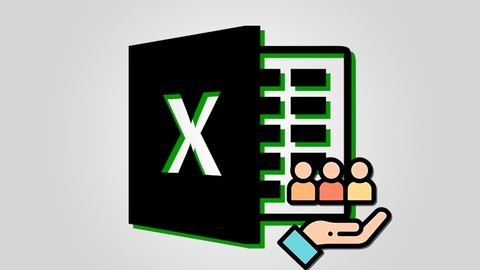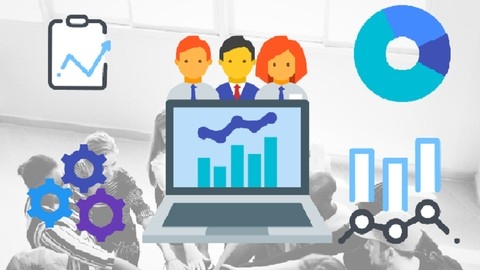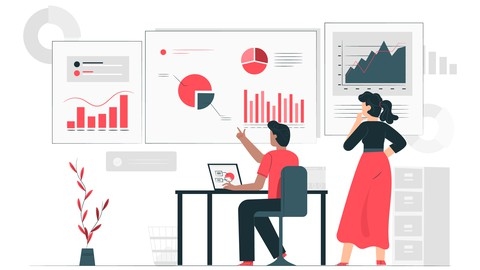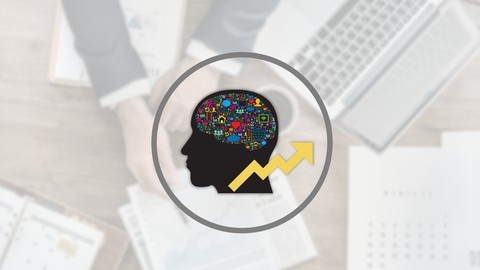HR analytics is the process of collecting, analyzing, and interpreting data to make better decisions about your workforce.
By learning HR analytics, you can gain valuable skills that are applicable to a wide range of HR roles, from recruiter to HR manager.
You’ll be able to identify patterns and trends in your data, understand employee engagement and retention, and make data-driven decisions that improve the performance of your organization.
Finding the right HR analytics course on Udemy can be a daunting task, with so many options available.
You’re looking for a program that is comprehensive, engaging, and taught by experts, but also fits your learning style and goals.
For the best HR analytics course overall on Udemy, we recommend HR Analytics using MS Excel for Human Resource Management.
This course is a great introduction to HR analytics and dashboard creation using Excel, perfect for those who are new to the field or looking to improve their Excel skills.
The course includes step-by-step instructions, real-world examples, and hands-on projects, making it a valuable resource for both beginners and experienced professionals.
This is just one of many excellent HR analytics courses available on Udemy.
Keep reading to explore our full list of recommendations and find the perfect course for your journey.
HR Analytics using MS Excel for Human Resource Management
This HR Analytics using MS Excel course equips you with the essential skills to unlock the power of data within your HR function.
You’ll gain a deep understanding of HR analytics, starting with the foundational principles and progressing to advanced techniques.
The course emphasizes hands-on learning with Excel, guiding you through crucial functions like SUM, AVERAGE, VLOOKUP, and COUNTIF.
You’ll master data manipulation techniques like sorting, filtering, and data validation, ensuring your data is clean and ready for analysis.
Beyond the basics, you’ll explore a wide range of HR metrics, including staffing, training & development, and performance.
You’ll learn how to build impactful HR charts and dashboards using Excel’s versatile charting capabilities.
From bar charts and line charts to pie charts and scatter plots, you’ll master the art of presenting your data effectively.
This course also ventures into the exciting realm of predictive analytics.
You’ll dive into linear regression and multiple linear regression, gaining the ability to build and interpret powerful models that predict future outcomes.
You’ll learn how to assess model accuracy and handle crucial data challenges like missing values and outliers.
Throughout the course, you’ll work through engaging case studies, applying your knowledge to real-world HR scenarios.
You’ll develop practical skills in creating HR dashboards that track key performance indicators (KPIs) and drive data-driven decision making.
HR & People Data and Analytics Fundamentals
You’ll learn how to leverage data to make informed decisions, understand the health of your workforce, and ultimately, contribute to your organization’s success.
The course starts by equipping you with a solid foundation in HR data basics.
You’ll discover the origins of data, its limitations, and the critical importance of maintaining data hygiene.
You’ll then delve into the practical world of data analysis using Google Sheets, learning how to create insightful pivot tables and calculate key metrics like headcount, engagement, diversity, and recruiting effectiveness.
Beyond data analysis, the course emphasizes the crucial role of partnerships between HR teams and data experts.
You’ll learn how to build these relationships, ensuring that data is used effectively to drive impact.
Finally, you’ll be guided on presenting your findings with clarity and confidence, using compelling stories to communicate your insights to stakeholders.
This course is a valuable resource for anyone seeking to harness the power of data in HR.
You’ll gain the skills and knowledge necessary to turn data into actionable insights, leading to better decision-making and a more effective workforce.
Advanced Excel for HR Managers | Automation & Analytics
In this course you’ll learn practical skills to automate tasks, analyze data, and generate reports that will transform your HR decision-making.
The course starts with a clear overview of the power of Excel in HR analytics, quickly transitioning to real-world scenarios.
You’ll dive into modules like “Analyzing Expense Claims,” where you’ll learn to identify patterns and trends using powerful Excel functions.
The course also includes modules dedicated to analyzing data from Google Forms, a valuable tool for HR surveys, and techniques for cleaning data in email and attendance records to ensure accuracy and consistency.
Beyond the core data analysis skills, you’ll gain experience with practical applications like reconciling names with different spellings, allocating hours to co-facilitators, and creating insightful reports for 360-degree feedback.
People Analytics 101 : HR Analytics Fundamentals
This course goes beyond the surface level, delving into the practical applications of analytics in a way that’s both engaging and insightful.
You’ll begin by building a robust foundation in analytics concepts.
The course delves into the “Analytics Maturity Model,” helping you understand how organizations evolve in their data utilization.
You’ll also dive into the “Anatomy of Statistical Modeling,” mastering the language of data analysis and preparing you for the hands-on projects that follow.
Get ready to roll up your sleeves as you learn how to collect and prepare data using R and R Studio.
You’ll explore data discovery techniques, including data cleaning and organization.
The course then guides you through essential data analysis methods, such as Uni-Variate Analysis, Bi-Variate Analysis, and outlier detection, empowering you to identify hidden patterns within your datasets.
The course doesn’t shy away from advanced concepts, leading you through model selection and building, using techniques like Random Forests to predict outcomes and answer critical questions about your workforce.
You’ll also learn how to rigorously evaluate your models, ensuring accuracy and reliability.
The final portion of the course brings the theoretical knowledge back to the practical world of HR.
You’ll explore the power of HR metrics and their application in tracking and improving organizational performance.
You’ll also delve into the Employee Life Cycle, applying your newfound knowledge to make a tangible impact on areas like recruitment, training, and employee retention.
You’ll gain the skills and knowledge needed to thrive in today’s data-driven HR landscape.
HR,HR Analytics, Human Resource Management, 2024 Edition
This course takes a deep dive into the evolution of HR, equipping you with the tools to navigate the complexities of modern organizations.
You’ll explore the historical context of HR, understanding the differences between pluralistic and unitarist perspectives on management.
You’ll learn how to effectively manage and motivate your team, delving into various management styles and exploring the power of performance management.
But the true standout feature of this course lies in its comprehensive exploration of HR analytics.
You’ll discover the importance of data-driven decision-making in HR, gaining a practical understanding of the four phases of HR analytics and how to leverage data effectively.
You’ll learn to identify valuable HR data sources, develop systematic problem-solving techniques, and understand how to measure what truly matters to your organization.
The course then seamlessly transitions into strategic HR, showing you how to align HR strategy with the overall company goals.
You’ll learn to think strategically about HR’s role in driving organizational success, exploring case studies and real-world examples to solidify your understanding.
This course is a valuable resource for anyone seeking to enhance their HR knowledge and skills, particularly for those looking to leverage data-driven insights to make a real impact on their organization’s performance.
HR Analytics: How To Create An HR Dashboard Using Excel
This course starts by introducing the concept of an HR dashboard and showing typical examples, so you’ll understand what you’re working towards.
After the introduction, you’ll dive right into practical sessions where you’ll learn step-by-step how to create a simple HR dashboard in Excel.
The course covers essential Excel features for dashboard creation, like data visualization tools and PivotTables for analyzing employee data.
But it doesn’t stop at just a basic dashboard.
You’ll also learn how to make your dashboard interactive, with multiple sections covering the process in detail.
The course is very hands-on, with reading materials provided to supplement the practical sessions.
You’ll be creating dashboards from scratch using real employee data, so you’ll gain valuable experience.
Workforce Analytics for HR
You’ll delve into the “why” behind HR Analytics, exploring the importance of data-driven decision making in today’s competitive landscape.
The course goes beyond theoretical concepts, providing practical applications through real-world case studies.
You’ll learn how companies like Starbucks have implemented data-driven strategies for workforce engagement and see how SE Asia Property utilizes the Balanced Scorecard framework for strategic decision making.
You’ll discover essential metrics and key performance indicators (KPIs) for measuring human capital and explore various examples of their application across different HR functions, including recruiting.
The course also introduces you to the AACEE maturity model, providing a framework for understanding and advancing your organization’s workforce analytics capabilities.
You’ll gain a valuable foundation for building a data-driven culture within your organization and making informed decisions that drive workforce performance.
HR Analytics Master Course with Excel, Python and R
This HR Analytics Master Course with Excel, Python, and R is a comprehensive guide to mastering the tools and techniques of modern data analysis in the HR context.
You’ll start by building a solid foundation with essential software: Python, R, and Rstudio.
You’ll then dive deep into the world of data types, learning to import and validate information from Excel files – a crucial skill for any analyst.
The course moves on to explore the fundamentals of statistics, starting with Univariate analysis.
Here, you’ll learn to calculate key metrics like mean, median, mode, range, variance, and standard deviation for both numerical and categorical data.
You’ll also discover how to visualize your findings using histograms, giving you a clear picture of your data’s distribution.
Next, you’ll delve into Bivariate analysis, uncovering the relationships between different data types through scatter plots, cross-tabs, and box plots.
These techniques are essential for identifying patterns and drawing insights from your data.
The course doesn’t stop at basic analysis.
You’ll also learn how to clean your data, handling missing values and outliers – crucial steps for ensuring the accuracy and reliability of your findings.
Then, you’ll move on to Feature Engineering, where you’ll learn to transform your data and create new variables that can significantly improve the accuracy of your models.
You’ll also be introduced to Hypothesis Testing, a powerful tool for drawing statistically sound conclusions from your data.
These skills prepare you to build both Linear Regression and Logistic Regression models, allowing you to make predictions and solve real-world problems.
The course doesn’t shy away from advanced topics either.
You’ll gain insights into Text Analytics, allowing you to extract meaningful information from text data, and Clustering, a technique for grouping similar data points together.
Throughout the course, you’ll be presented with clear examples and practical applications, making it easy to understand and apply the concepts you learn.
This HR Analytics Master Course will equip you with the knowledge and skills you need to confidently analyze HR data, make informed decisions, and contribute to your organization’s success.








